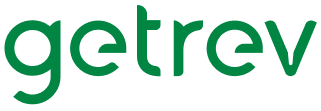Ideal customer profiles are a staple of B2B sales strategy. And they make sense: if you can identify the traits that make your best customers your best customers, you can target the same traits in your best prospects.
The problem with ICPs is that they are generally a shallow way to characterize companies. A sales team can put an entire ICP in bullet points on a single slide. That ICP is often a static document, too, not accounting for changes in your best customers or your best prospects.
In essence, a traditional ICP is a stereotype. Sales teams target prospects on five or so traits. The B2C world has moved away from targeting prospects based on how they look, so why do so many B2B companies still target their best-fit customers that way?
The simple answer is that deeper information about companies is harder to take into account. Really, revenue teams need to identify prospects based on the decisions and behaviors of companies—but that data is hard to understand, let alone formulate. So, ICPs remain assumption-based, superficial and limited.
That’s why we at Rev set out to create a new approach to identifying best-fit prospects. Using our AI-based modeling techniques, we developed the aiCP: a dynamic, customizable and in-depth way to profile prospects across market segments.
Let’s look at the power of aiCPs and how they help revenue leaders target the right prospects.
aiCPs target look- and act-alikes.
Traditional ICPs are so brief (and so shallow) because they essentially identify lookalike firmographics: industry, headcount, revenue, recent funding, specific job titles and so on. However, these are not insightful ways to understand how a company actually operates, and therefore how they compare to your best customers.
aiCPs, on the other hand, rely not on firmographics but on exegraphics.
Exegraphics are pieces of information or characteristics that convey how a company executes its mission—and they are the crux of aiCPs. Just like the B2C world realized psychographics are far more powerful than demographics, Rev’s exegraphics offer the same caliber of insight beyond old-school firmographics for the B2B world.
Our modeling technique looks at everything from company messaging to hiring boards and employee resumes to understand how a company functions, how it changes over time and how it compares to its peers—and it examines millions of data points to build a clear picture of what actually makes your best customers your best.
(For a more in-depth exploration of exegraphics, read What are exegraphics?)
Then, we build an aiCP from that picture. You get to really know how your best existing customers function, and what they share in common, regardless of topical characteristics. You know how your target market behaves on the inside—not just how it looks, but also how it acts—now that you’ve put more rigor into defining your ideal customers. Therefore, you can get much more precise in how you target new accounts, cutting through the fluff of firmographic lookalikes alone.
aiCPs evolve.
Too often, traditional ICPs remain static within a target market. A sales team identifies traits to look for, and then it sticks with them. However, industries and individual companies are constantly changing, and it makes little sense why a sales strategy shouldn’t evolve too.
That’s why we build aiCPs as living sales strategies: they are meant to iterate continuously, and respond both to the market and to your own human input.
Dynamic aiCPs
Once you enhance your customer profiles with aiCPs, incorporating change over time is inevitable. After all, your products change, your customers change, the economy changes. Nothing in a sales environment stays the same forever. The dynamic nature of aiCPs takes those changes into account.
- aiCPs change with each successful sale. The customers you’re selling to today might look different than the ones six months or a year ago. You can push every sale you close back into the aiCP model so that it incorporates the new data points associated with that customer. Refining the aiCP each time a new customer comes on board keeps your seed list relevant and your targeting in sync with your market.
- aiCPs grow alongside your best customers. Say your organization started off selling strictly to early-stage tech startup companies. You’re still closing those sales today, but your existing customers have stuck with you through their Series B funding and are increasingly becoming successful enterprise companies. By continuously reassessing your aiCP over time, your target profile grows to include other established companies that behave like your best oldest customers in addition to your best new customers.
- Companies take actions that readjust themselves. Think of those important moments that dictate the course of a company. A new executive hire. A new product launch. Those fundamentally alter the way a company operates, which means they will either become a better or a worse target for your sales team. The dynamic nature of aiCPs capture those changes to reprioritize them for your revenue team.
- New exegraphics improve the modeling. Exegraphics are not a static tool either. We at Rev are continuously developing new ways of understanding companies. That means each new analysis of your seed list will adjust the Rev Score of each target account and reprioritize them based on the best understanding available—in conjunction with the most recent assessment of thousands of active peer companies.
Customizable aiCPs
For all the characteristics of companies that exegraphics capture, they don’t catch your own human understanding of your revenue team, your company and your customers. That’s why aiCPs are customizable, allowing you to weight certain traits and prioritize accordingly.
Rev’s AI model is not a black box: it’s a powerful tool to give you, as a revenue leader, the target list you need. Pairing that utility with your institutional knowledge enables you to create massively effective customer profiles, prioritized according to your understanding of what matters.
Our customers are able to drive their aiCPs. We’ll help you define custom exegraphic lenses. We’ll help you prioritize what’s meaningful or feasible for your revenue team. That can look like just about anything you can imagine—because while we’re passionate about getting you connected with top-quality prospects, you also need to feel passionate about the results.
aiCPs open up unexpected market segments, save resources and help you move faster.
Cutting-edge aiCPs offer plenty of advantages over traditional ICPs for revenue teams looking to reach new customers. Yet one of the great strengths of the aiCP model is its ability to identify entirely new market segments for growth-minded organizations.
You can dig deeper into how aiCPs open up new market segments in New ways to identify new market segments. Here, though, are some key insights into how an aiCP drives growth for companies who need to break into new markets.
- aiCPs do away with assumptions. The exegraphics behind aiCPs are less concerned with what industry a company is in, and more concerned with the interior functions of that company. So when the AI model identifies act-alike companies for your best customers, those often reside in entirely different and unexpected market segments from your typical clients.
Without this knowledge, revenue teams looking to breach new segments tend to presume that adjacent markets make for strong prospects. It makes some sense to reason that similar markets will have similar needs, and that this transition will be an easy one. Yet adjacent markets, despite appearing similar, are not always the best prospects. Let’s say your current best customers are auto insurance companies. You might decide to start targeting health insurance companies, while your hypothetical aiCP shows that the financial sector is your strongest addressable market—a pivot you would never make without deep insights into those prospects.
- aiCPs allow you to breach new markets more affordably. It’s expensive to craft a marketing plan for a new market segment. (One of the appeals of adjacent markets is that the marketing team isn’t building from the ground up.) But with the high-fidelity prioritization offered by aiCPs, you aren’t targeting the TAM from the start. You are taking a strike-team approach: sending in a small handful of sales reps, with basic early-messaging collateral, to make first contact with prospects most likely to bite.
- aiCPs get you to market faster. That surgical approach to the first prospects gets your team talking to prospects instead of building strategies without on-the-ground knowledge. What kind of engagement is happening? Can your reps close a deal? What needs to shift?
The customers you land (and the ones you don’t) can inform both the ever-evolving aiCP and your team’s sales strategy. You’re not stuck waiting for the marketing machine to start turning out materials before you can get started. The precision and high resolution of your aiCP accelerates the info-gathering period and helps you assess, quickly and definitively, whether a new market segment is viable. With this approach, you can manage that in 3-6 months, rather than the more usual 12-18 months to develop a go-to-market program.
The aiCP, in short, keeps your revenue team at the top of their game. Your decisions are driven by data more than generalization. Your targeting is more focused, your likelihood of landing new customers increases. You can accomplish more sales in less time, using less of your resources. And your strategy evolves as you do, keeping your team continuously sharp.
To see how your ICP compares to your aiCP—and get a view of the behavioral characteristics of your best customers—contact us to schedule your free aiCP audit.


